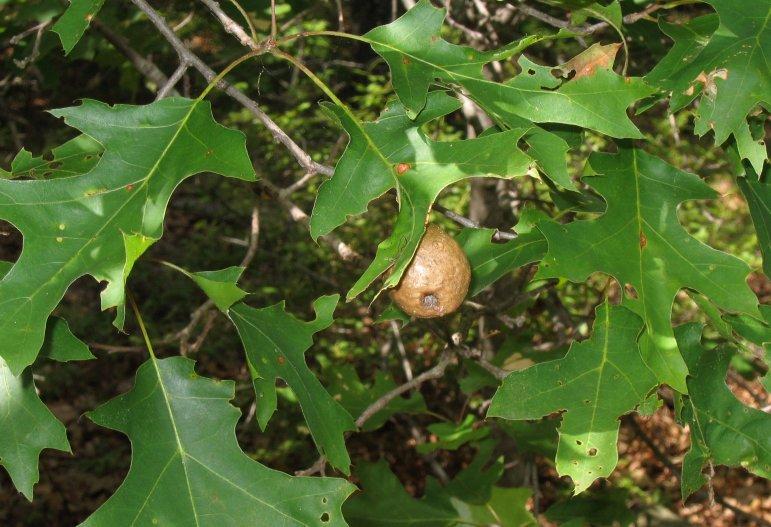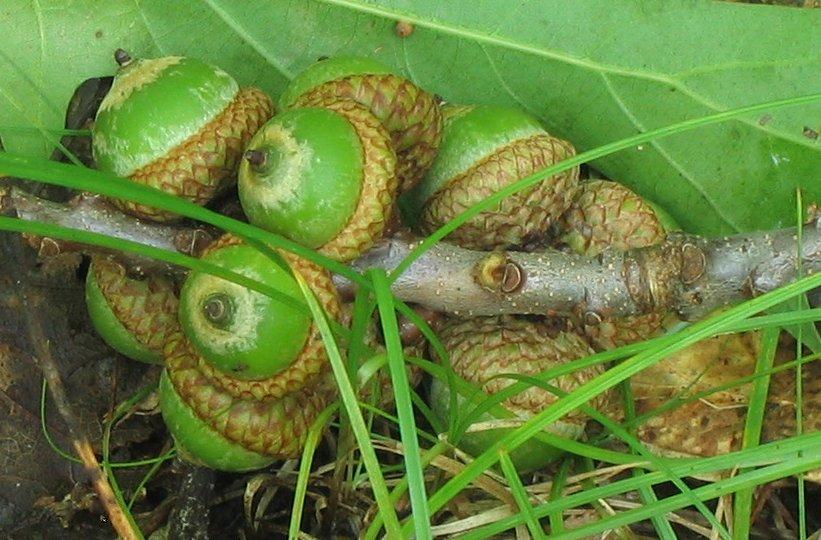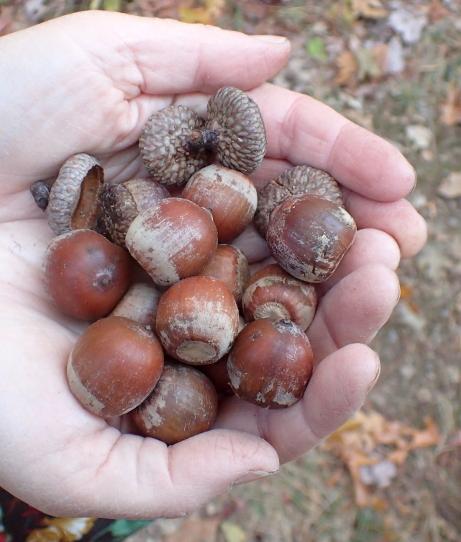Northern Red Oak
Quercus rubra
One of the most common and abundant oak species in Massachusetts, red oak grows straight and tall, with stout branches at
right angles to the trunk. It is distinguished by its bark featuring prolonged ridges and cracks. Cracks may have reddish
tint and a light-colored stripe along the central part. Red oak is the only oak in our area with pronounced striped cracks
all the way along upper and lower trunk. Leaves are alternate, 7- to 9-lobed, sized 5-7 x 4-6", their lobes tapering gradually
from broad bases and terminating with long bristle-pointed teeth. Lobes forming the second pair counting from the apex are
the largest. Lobes are less deeply cut than in most other oaks of the red oak group (except for black oak which can be similar).
Acorns require 2 years of growth to mature. They are large and plump, with shallow, flat cups that can be up to 2 cm in diameter.
The kernel is very bitter, yet eaten by deer, squirrels, and birds. Red oak is valued for lumber, veneer, railroad ties, and
fence posts. Its longevity (to 500 years), rapid growth, and adaptability to varied soils and situations makes it a popular
street and specimen tree.

Leaves and a cynipid gall (gall wasp). August 6

Young acorns. July 25

Ripe acorns. October 31